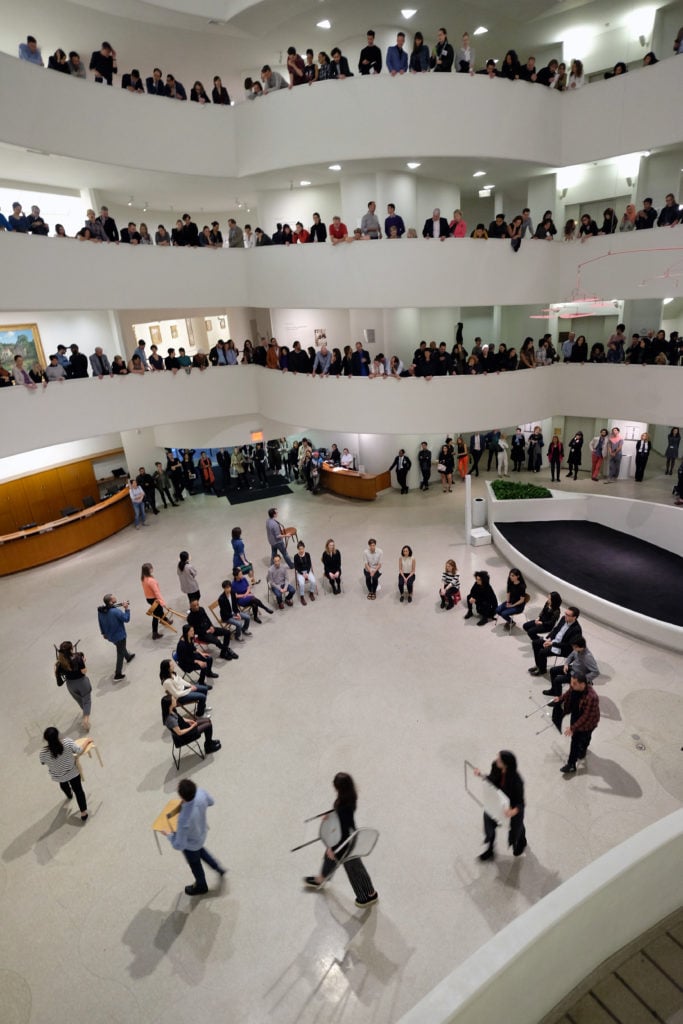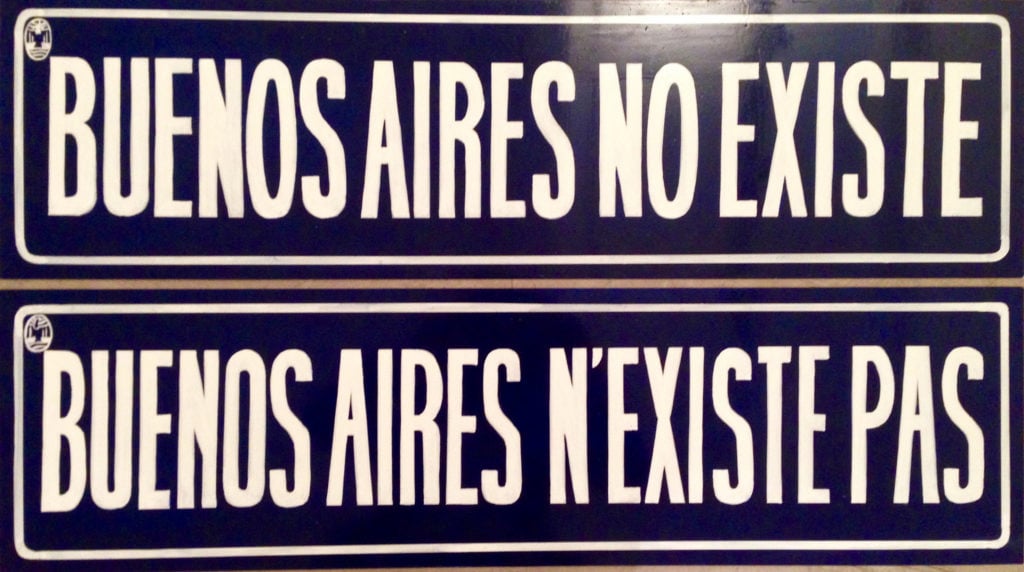Art Fairs
How One Art Fair Is Getting Argentinian Artists Into the World’s Best Museum Collections
Nearly a dozen museums are the beneficiaries of ArteBA's ambitious museum acquisitions program.

Nearly a dozen museums are the beneficiaries of ArteBA's ambitious museum acquisitions program.

Brian Boucher

More than 10 major museums, including the Museum of Fine Arts, Boston, the Los Angeles County Museum of Art, and Madrid’s Reina Sofía, took home art from this year’s ArteBA fair—and it’s all thanks to a little-known museum acquisitions program that is perhaps the most ambitious of its kind.
The program, supported by donations from Argentinian businesses and individual supporters, offers up to $10,000 each to participating museums to acquire work from the Buenos Aires art fair. This year, the Dallas Museum of Art bought a drawing by the Buenos Aires-based artist Horacio Zabala, while the Eli and Edythe Broad Art Museum at Michigan State University chose a work by David Lamelas.
Andrés von Buch, who founded the program in 2002, also serves on the International Council of New York’s Museum of Modern Art, where he frequently supports the museum’s purchases of Argentine artists. “This is how you get art from the periphery into the main center of attraction,” he said, a goal that echoes that of the support of museum acquisitions. He pointed out that many Latin American art patrons are busily working toward the same goal, citing as one example a major gift from the Colección Patricia Phelps de Cisneros to MoMA in 2016, which included more than 100 Latin American artworks and support for a research institute. “Little by little, all this is bearing fruit,” he said.
The ArteBA fair, whose 26th edition took place last weekend, has been making a push to promote the country’s artists abroad through the initiative, with no smaller a goal than securing Argentine artists’ status in art history. Though ArteBA’s program is not the only one of its kind, it does have an uncommonly extensive roster of participating museums—and an uncommonly deep bench of supporters, rather than the more typical backing of a single foundation.
The program coincides with a concerted effort by museums throughout the Western world to bolster their holdings of art from outside of Europe and North America. At ArteBA in 2015, New York’s Guggenheim Museum acquired Asamble (Assemble), a 2015 performance work by Amalia Pica (born in 1978 in Neuquén). The piece has since been staged in London and in New York.

Amalia Pica, Asamble (2015). Courtesy Guggenheim Museum.
Although Argentina has given birth to major 20th-century artists like León Ferrari, Lucio Fontana, and Liliana Porter, efforts to get the country’s contemporary artists on curators’ and collectors’ radars are necessary because of its history of relative isolation. Buenos Aires is a long way from many of the world’s art capitals, and its economy has suffered due to rampant inflation and oppressive political regimes.
National and local politicians in recent years have risen to the challenge, partly by providing financial support for Argentinian galleries to participate in international art fairs. They are also investing additional money in bringing the international art world to Argentina. Last year, the government of Buenos Aires teamed up with the massive Art Basel fair to become the inaugural site of the Art Basel Cities initiative.
This year, the Dallas Museum of Art used the fair’s acquisitions program to fill in a gap in its holdings. Anna Katherine Brodbeck, the museum’s assistant curator of contemporary art, picked out a drawing by Horacio Zabala (born in Buenos Aires in 1943 and still living in the city), on offer from Henrique Faria Gallery of New York and Buenos Aires.
“Zabala came of age during the beginning of the so-called ‘dirty wars’ with the installment of a military government,” Brodbeck said. “He was dealing with government censorship and oppression in a conceptual vein.”

Davis Lamelas, Bueno Aires No Existe / Buenos Aires N’Existe Pas (2011). Courtesy ArteBA.
Carla Acevedo Yates, assistant curator at the Eli and Edythe Broad Art Museum at Michigan State University, in East Lansing, chose a work by David Lamelas, Buenos Aires no Existe, Buenos Aires N’existe Pas (2011), also from Henrique Faria.
The title of the work quotes the first line of a letter written by Marcel Duchamp to his brother while the artist was spending time in the city. The acquisition comes at an opportune moment: Yates is organizing an exhibition of Lamelas’s work at the Broad Art Museum next June. “Our museum is just five years old,” Acevedo Yates said, “so we’re just building our strategy to collect contemporary art.”